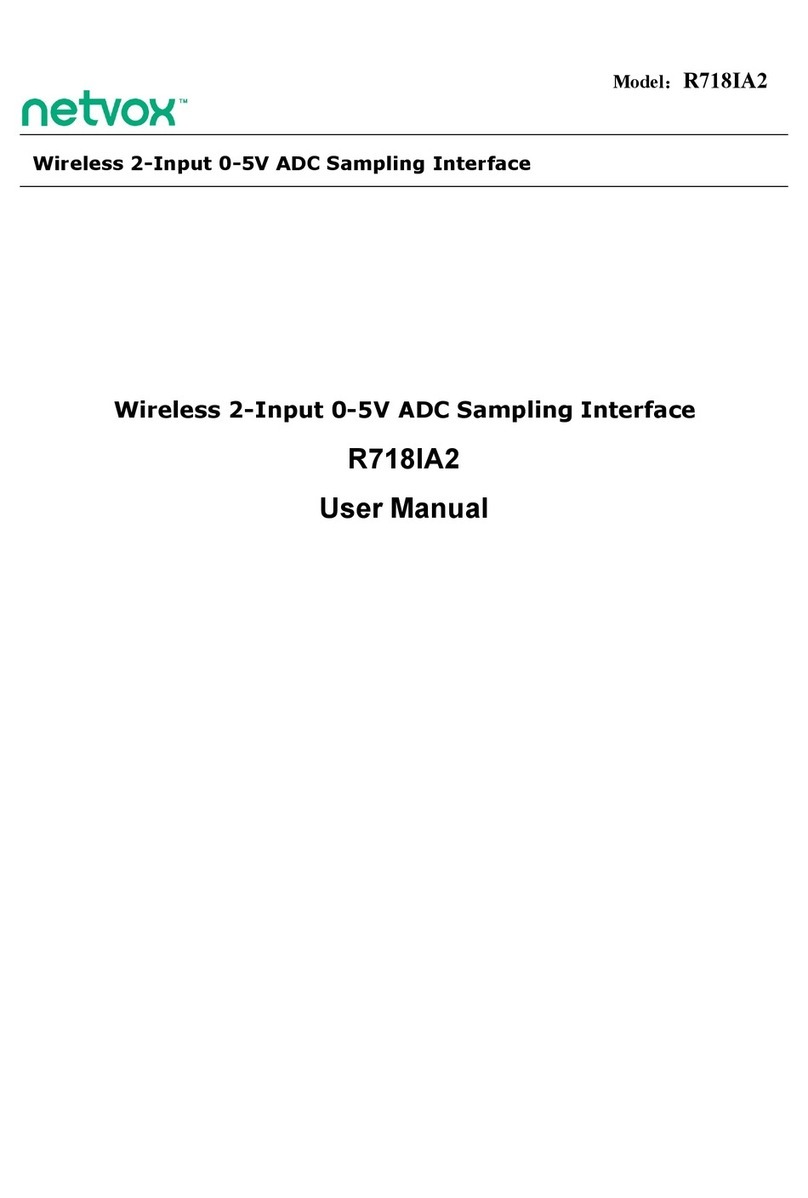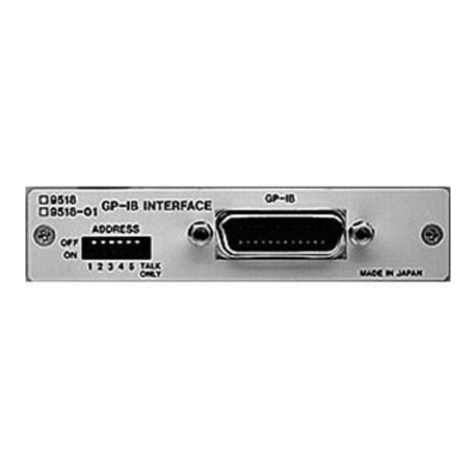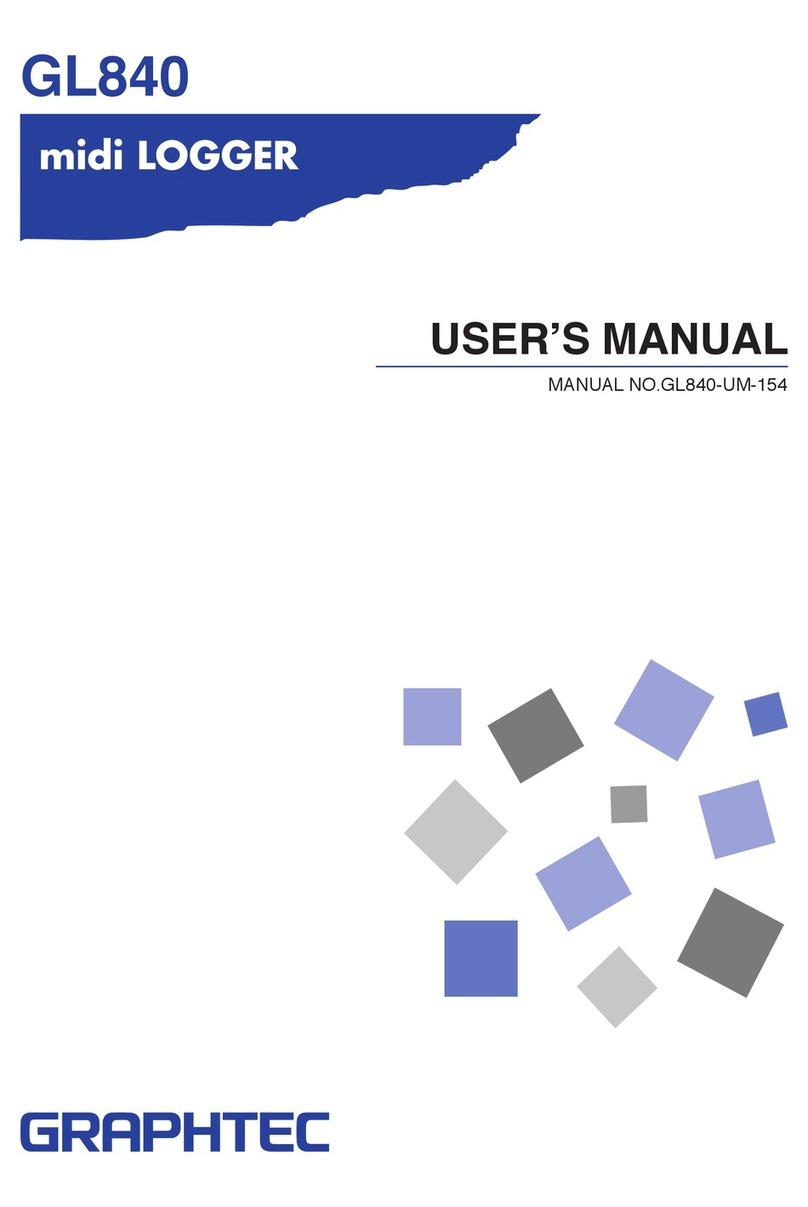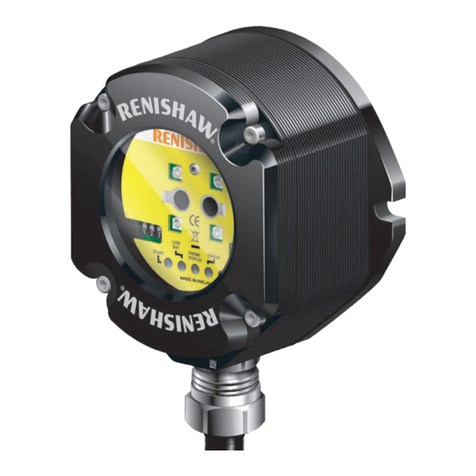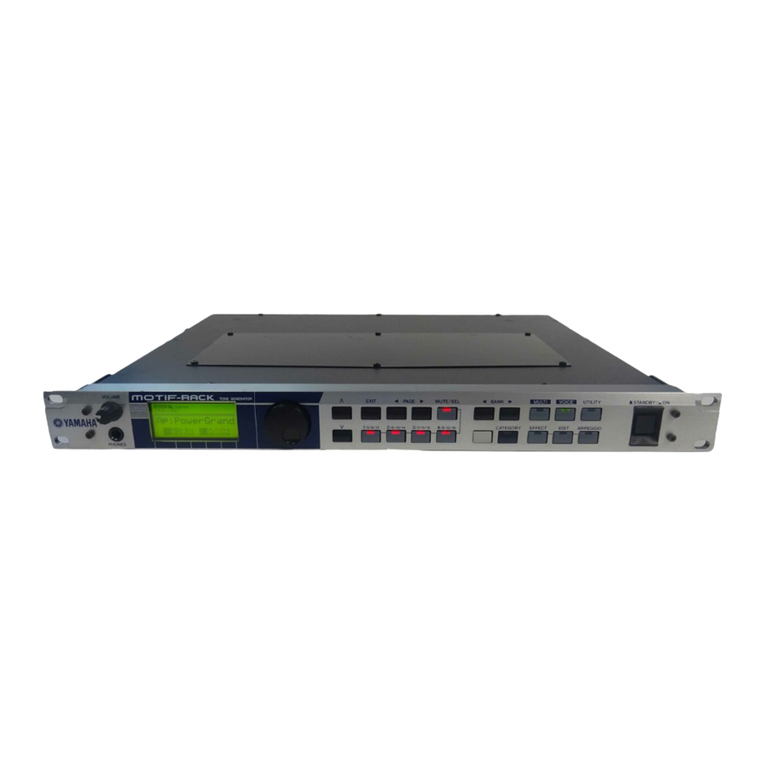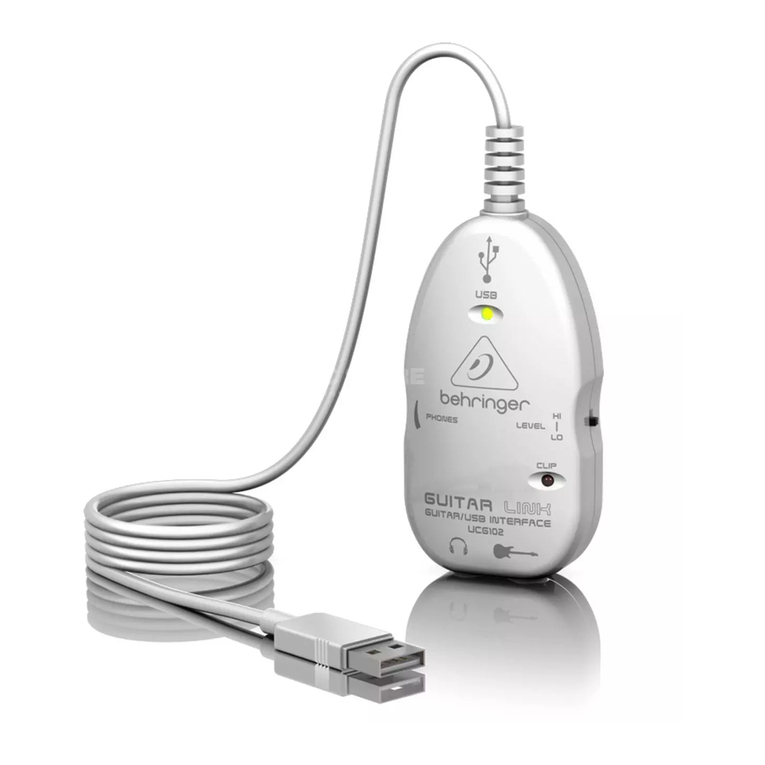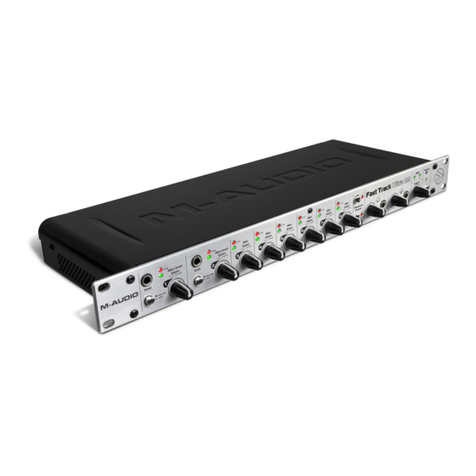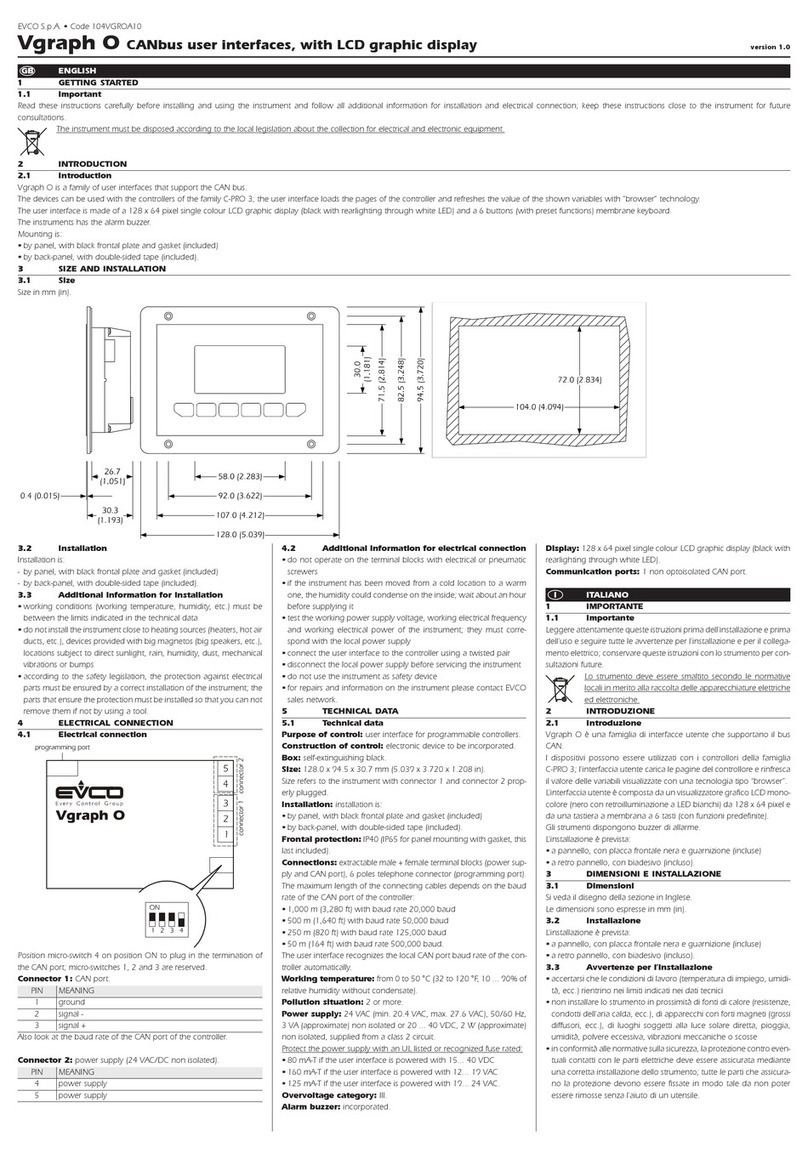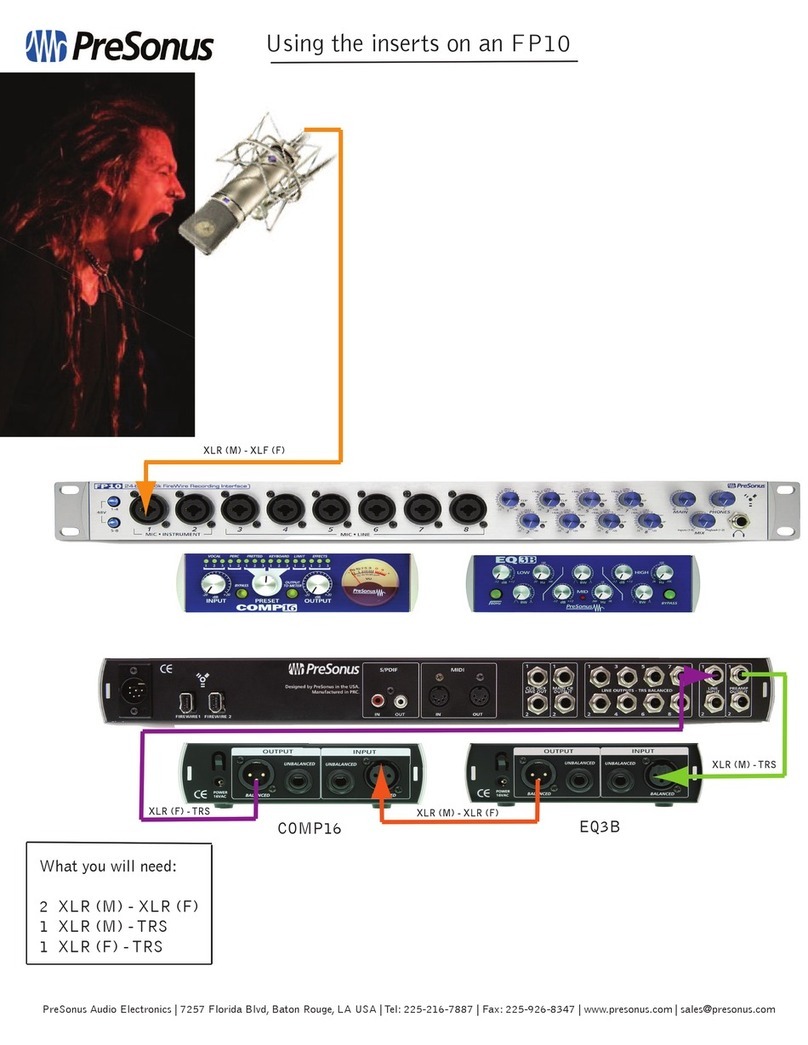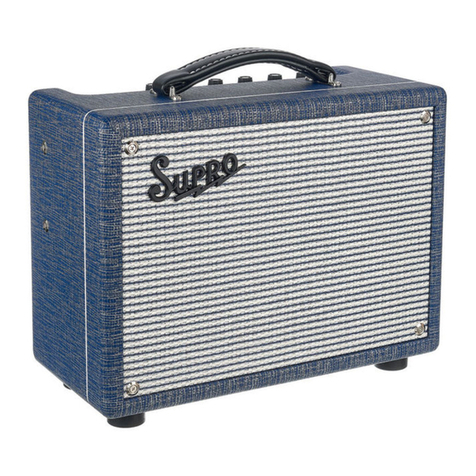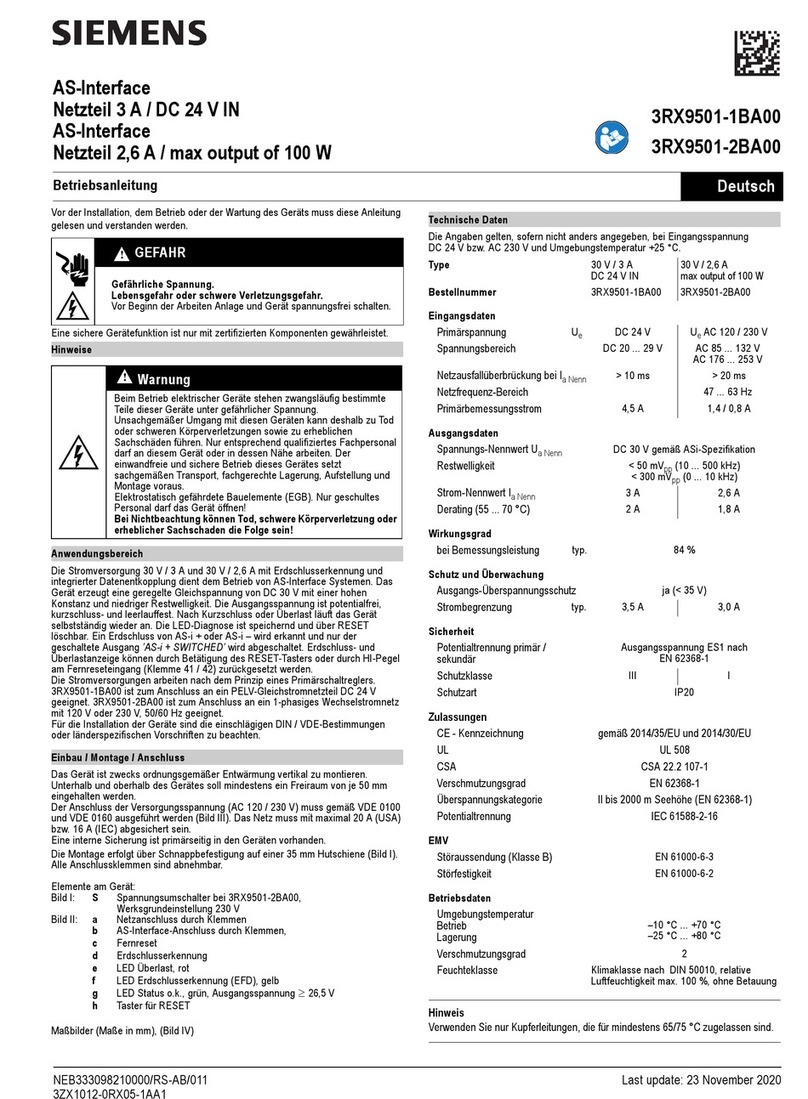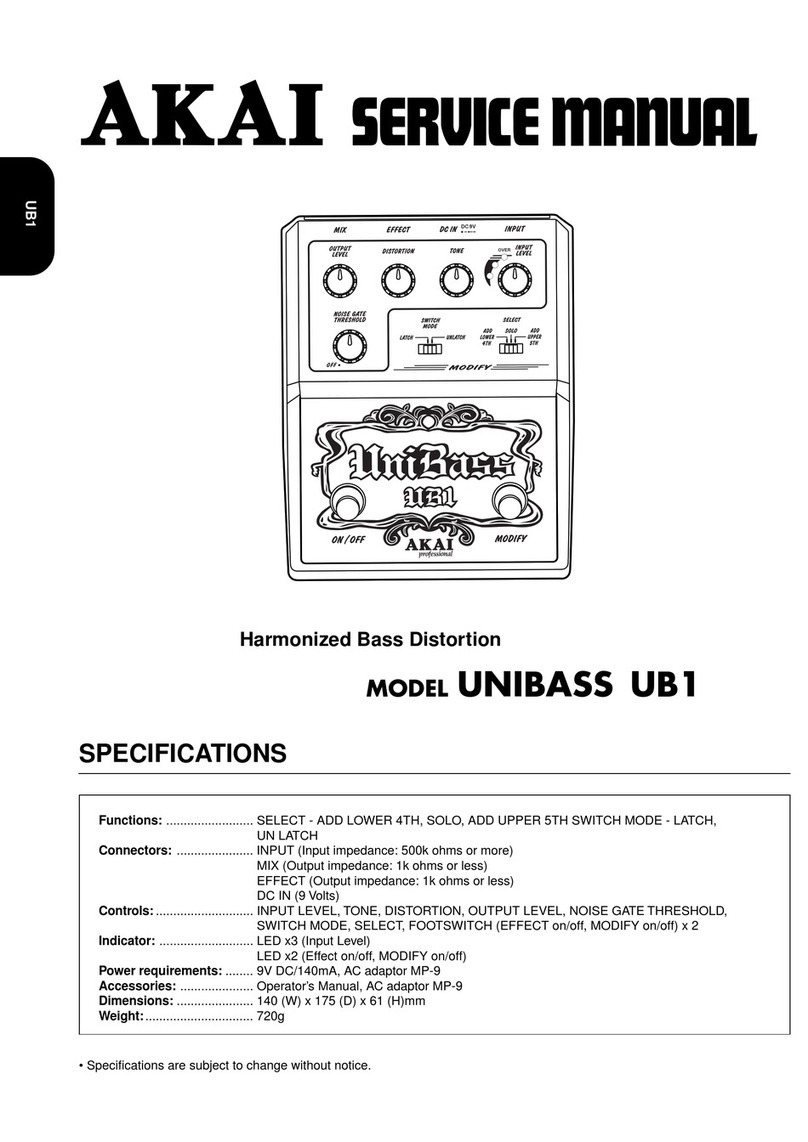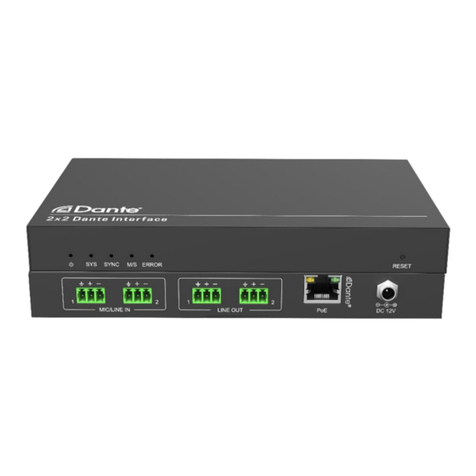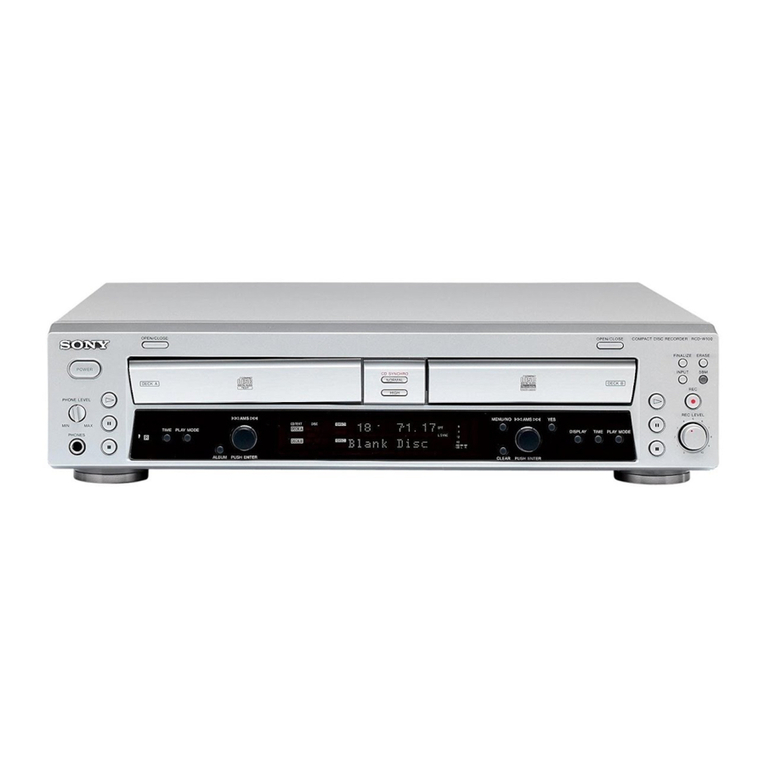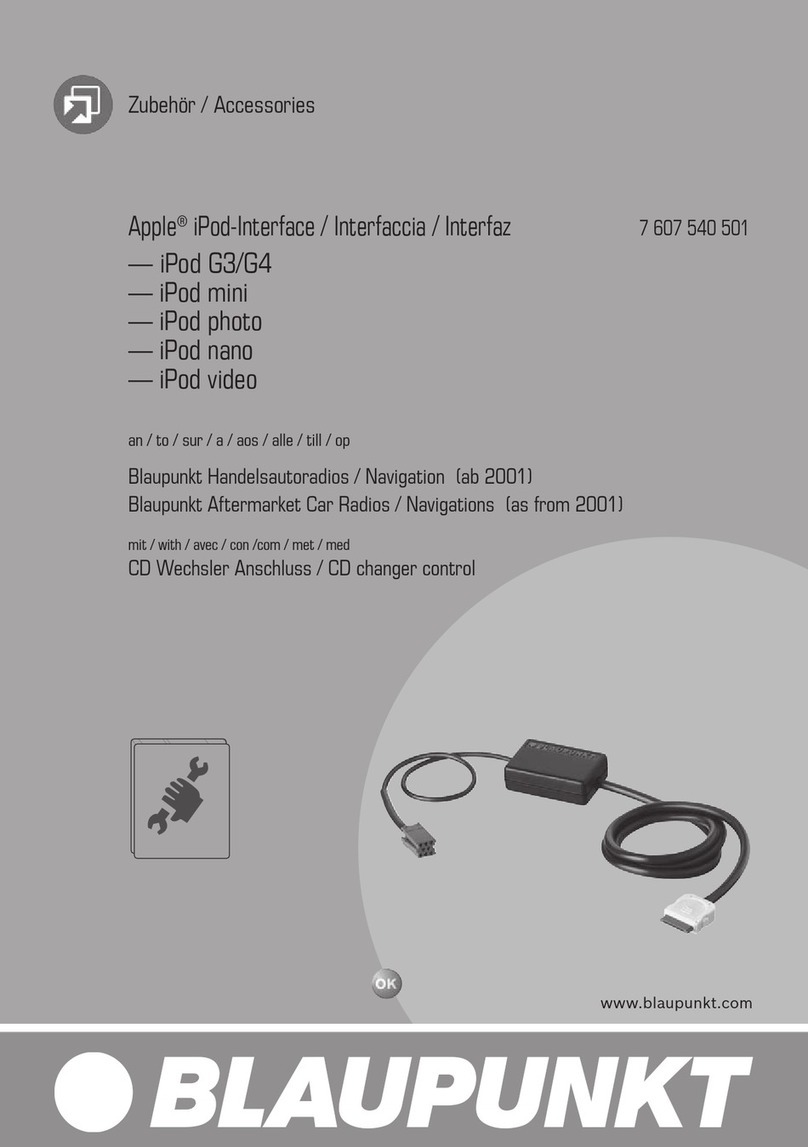netvox R718J User manual

R718J
Wireless Dry Contact Interface
Wireless Dry Contact Interface
R718J
User Manual
Copyright©Netvox Technology Co., Ltd.
This document contains proprietary technical information which is the property of NETVOX Technology. It shall
be maintained in strict confidence and shall not be disclosed to other parties, in whole or in part, without written
permission of NETVOX Technology. The specifications are subject to change without prior notice.

1
Table of Contents
1. Introduction ................................................................................2
2. Appearance.................................................................................2
3. Features ......................................................................................3
4. Set up Instruction........................................................................3
5. Data Report ................................................................................4
5.1 Example of ReportDataCmd................................................5
5.2 Example of ConfigureCmd ..................................................6
5.3 Example for MinTime/MaxTime logic ................................8
6. Installation................................................................................10
7. Information about Battery Passivation .....................................11
7.1 To determine whether a battery requires activation............11
7.2 How to activate the battery ................................................11
8. Important Maintenance Instruction...........................................12

2
1. Introduction
R718J is a ClassA external dry contact device based on LoRaWAN open protocol of Netvox. It can externally connect various
switches, buttons, relays and reed switch output. It can detect the closing or disconnecting signal of dry contact and is
compatible with LoRaWAN protocol.
LoRa wireless technology:
LoRa is a wireless communication technology dedicated to long-distance low-power consumption. Its spread-spectrum
modulation method greatly increases the communication distance compared with other communication methods, and can be
widely used in long-distance low-rate IoT wireless communication fields in various occasions. Such as automatic meter
reading, building automation equipment, wireless security systems, industrial monitoring and control. It has the characteristics
of small size, low power consumption, long transmission distance and strong anti-interference ability.
LoRaWAN:
LoRaWAN defines an end-to-end standard specification using LoRa technology to ensure interoperability between devices and
gateways from different vendors.
2. Appearance
Indicator
Function Key

3
3. Features
⚫SX1276 wireless communication module
⚫2 ER14505 lithium batteries (3.6V / section) parallel power supply
⚫Dry contact detection
⚫Magnetic base
⚫Protection class IP67
⚫Compatible with LoRaWANTM Class A
⚫Frequency hopping spread spectrum
⚫Applicable to third-party platforms: Actility/ThingPark, TTN, MyDevices/Cayenne
⚫Low power consumption and long battery life
⚫Battery Life:
⁻Please refer to web: http://www.netvox.com.tw/electric/electric_calc.html
⁻At this website, users can find battery life time for variety models at different configurations.
4. Set up Instruction
On/Off
Power on
Insert batteries. (Users may need a screwdriver to open)
Turn on
Press and hold the function key for 3 seconds until the green indicator flashes once.
Turn off (Restore to factory setting)
Press and hold the function key for 5 seconds until green indicator flashes for 20 times.
Power off
Remove Batteries.
Note
1. Remove and insert the battery; the device is at off state by default.
2. On/off interval is suggested to be about 10 seconds to avoid the interference of
capacitor inductance and other energy storage components.
3. Five seconds after power on, the device will be in engineering test mode.
Network Joining
Never joined the network
Turn on the device to search the network.
The green indicator stays on for 5 seconds: success
The green indicator remains off: fail
Had joined the network
Turn on the device to search the previous network.
The green indicator stays on for 5 seconds: success
The green indicator remains off: fail
Fail to Join the Network
Please check the device verification information on the gateway or consult your platform
server provider.

4
Function Key
Press and hold for 5 seconds
Restore to factory setting / Turn off
The green indicator flashes for 20 times: success
The green indicator remains off: fail
Press once
The device is in the network: green indicator flashes once and sends a report
The device is not in the network: green indicator remains off
Sleeping Mode
The device is on and in the
network
Sleeping period: Min Interval.
When the reportchange exceeds setting value or the state changes: send a data report
according to Min Interval.
Low Voltage Warning
Low Voltage
3.2V
5. Data Report
When the device is turned on, it will immediately send a version package.
Data will be reported once per hour by default setting.
Default Setting:
Maximum Time: 0x0E10 (3600s)
Minimum Time: 0x0E10 (3600s) // Detect the current voltage value every 3600s by default setting
Battery Change: 0x01 (0.1V)
LastMessageResendTime: 0x00
Dry Contact Detection Trigger:
When the dry contact is connected, the data status bit is “1”.
When the dry contact is disconnected, the data status bit is “0”.
Last Message Resend Time Function:
Resendtime = 0x00 or 0xFF, send the current dry contact state
Resendtime = 0x03 to 0xFE, send the current dry contact state, and re send the dry contact state after 3-254s
*The function of Resendtime is supported by the firmware version after 2020/05/13 version
Note:
The device send data cycle depends on real burning configuration.
The interval between two reports must be the minimum interval.
Please refer Netvox LoRaWAN Application Command document and Netvox Lora Command Resolver
http://www.netvox.com.cn:8888/cmddoc to resolve uplink data.

5
Data report configuration and sending period are as following:
5.1 Example of ReportDataCmd
FPort:0x06
Bytes
1
1
1
Var(Fix=8 Bytes)
Version
DeviceType
ReportType
NetvoxPayLoadData
Version–1 byte –0x01——the Version of NetvoxLoRaWAN Application Command Version
DeviceType–1 byte –Device Type of Device
The devicetype is listed in Netvox LoRaWAN Application Devicetype doc
ReportType – 1 byte –the presentation of the NetvoxPayLoadData,according the devicetype
NetvoxPayLoadData– Fixed bytes (Fixed =8bytes)
Device
Device
Type
Report
Type
NetvoxPayLoadData
R718J
0x21
0x00
SoftwareVersion(1Byte)
Eg.0x0A—V1.0
HardwareVersion
(1Byte)
DateCode
(4Bytes,eg0x20170503)
Reserved
(2Bytes,fixed 0x00)
0x01
Battery
(1Byte,unit:0.1V)
Status
(1Byte 0:off 1:on)
Reserved
(6Bytes,fixed 0x00)
Min. Interval
(Unit:second)
Max. Interval
(Unit:second)
Reportable Change
Current Change≥
Reportable Change
Current Change<
Reportable Change
Any number between
1~65535
Any number between
1~65535
Can not be 0.
Report
per Min. Interval
Report
per Max. Interval
Tips
1. Battery Voltage:
The voltage value is bit 0 ~ bit 6, bit 7=0 is normal voltage, and bit 7=1 is low voltage.
Battery=0xA0, binary=1010 0000, if bit 7= 1, it means low voltage.
The actual voltage is 0010 0000 = 0x20 = 32, 32*0.1v =3.2v
2. Version Packet:
When Report Type=0x00 is the version packet, such as 0121000A0B202005200000, the firmware version is 2020.05.20
3. Data Packet:
When Report Type=0x01 is data packet.

6
Example 1 of Uplink: 0121012401000000000000
1st byte (01): Version
2nd byte (21): DeviceType 0x21 - R718J
3rd byte (01): ReportType
4th byte (24): Battery-3.6v , 24(HEX)=36(DEC),36*0.1v=3.6v
5th byte (01): Status-on
6th ~ 11th byte (000000000000): Reserved
Example 2 of Uplink: 0121019F00000000000000
1st byte (01): Version
2nd byte (21): DeviceType 0x21 - R718J
3rd byte (01): ReportType
4th byte (9F): Battery-3.1v , 1F (HEX)=31(DEC),31*0.1v=3.1v
// The bit 7=0 represent normal battery voltage, bit 7=1 represent low battery
5th byte (00): Status-off
6th ~ 11th byte (000000000000): Reserved
5.2 Example of ConfigureCmd
FPort:0x07
Bytes
1
1
Var (Fix =9 Bytes)
CmdID
DeviceType
NetvoxPayLoadData
CmdID–1 byte
DeviceType–1 byte –Device Type of Device
NetvoxPayLoadData– var bytes (Max=9bytes)
Description
Device
CmdID
DeviceType
NetvoxPayLoadData
Config
ReportReq
R718J
0x01
0x21
MinTime
(2bytes Unit:s)
MaxTime
(2bytes Unit:s)
BatteryChange
(1byte Unit:0.1v)
Reserved
(4Bytes,Fixed 0x00)
Config
ReportRsp
0x81
Status
(0x00_success)
Reserved
(8Bytes,Fixed 0x00)
ReadConfig
ReportReq
0x02
Reserved
(9Bytes,Fixed 0x00)
ReadConfig
ReportRsp
0x82
MinTime
(2bytes Unit:s)
MaxTime
(2bytes Unit:s)
BatteryChange
(1byte Unit:0.1v)
Reserved
(4Bytes,Fixed 0x00)

7
(1)Configure device parameters
MinTime = 1min, MaxTime = 1min, BatteryChange = 0.1v
Downlink: 0121003C003C0100000000 003C(Hex) = 60(Dec)
Device returns:
8121000000000000000000 (configuration is successful)
8121010000000000000000 (configuration failed)
(2)Read device parameters
Downlink: 0221000000000000000000
Device returns:
8221003C003C0100000000 (current device parameters)
SetLastMessage
ResendtimeReq
ALL(0xFF)
only used in
contact switch
device type
0x1F
0xFF
Resendtime(1Byte)
Unit:1s , Range:3-254s
when 0 or 255 no resend, default is no resend
Reserved
(8Bytes,Fixed 0x00)
SetLastMessage
ResendtimeRsp
0x9F
Status
(0x00_success)
Reserved
(8Bytes,Fixed 0x00)
GetLastMessage
ResendtimeReq
0x1E
Reserved
(9Bytes,Fixed 0x00)
GetLastMessage
ResendtimeRsp
0x9E
Resendtime(1Byte)
Unit:1s , Range:3-254s
when 0 or 255 no resend,default is no resend
Reserved
(8Bytes,Fixed 0x00)
Set resend time =5s
Downlink:1FFF050000000000000000
Response:
9FFF000000000000000000(Configuration success)
9FFF010000000000000000(Configuration failure)
*The function of Resendtime is supported by the firmware version after 2020/05/13 version

8
5.3 Example for MinTime/MaxTime logic
Example#1 based on MinTime = 1 Hour, MaxTime= 1 Hour, Reportable Change i.e. BatteryVoltageChange=0.1V
Note: MaxTime=MinTime. Data will only be reported according to MaxTime (MinTime) duration regardless
BatteryVoltageChange value.
Example#2 based on MinTime = 15 Minutes, MaxTime= 1 Hour, Reportable Change i.e. BatteryVoltageChange= 0.1V.
Example#3 based on MinTime = 15 Minutes, MaxTime= 1 Hour, Reportable Change i.e. BatteryVoltageChange= 0.1V.
MaxTime
..
0H 15th M 30th M 45th M 1H 1H 10th M 1H 25th M 1H 40th M 1H 55th M 2H 10th M
Wakes up and
collects data
REPORTS 3.6V
Wakes up and collects data
3.5V |3.5-3.6|=0.1
REPORTS 3.5V
Wakes up and
collects data
3.5V
Does not report
Wakes up and
collects data
3.5V
Does not report
Wakes up and
collects data
3.5V
Does not report
Wakes up and
collects data 3.5V
Does not report
Wakes up and
collects data
3.5V
Does not report
Wakes up and
collects data
REPORTS 3.5V
Wakes up and
collects data
3.6V
Does not report
Users push the button,
REPORTS 3.5V.
Recalculate MaxTime.
1H
2H
3H
sleeping (MinTime)
sleeping (MinTime)
MaxTime MaxTime
Wake up and collect data
REPORTS 3.6V
Wakes up and collect data
REPORTS 3.6V
Wakes up and collect data
REPORTS 3.6V
Wakes up and collects data
3.6V
Does not report
Wakes up and collects data
REPORTS 3.6V
Wakes up and collects data
REPORT 3.6V
sleeping
sleeping
sleeping
sleeping (MinTime)
MaxTime
0H 1H
15thM30thM45thM2H
sleeping
sleeping

9
Notes:
1) The device only wakes up and performs data sampling according to MinTime Interval. When it is sleeping, it does not
collect data.
2) The data collected is compared with the last data reported. If the data variation is greater than the ReportableChange value,
the device reports according to MinTime interval. If the data variation is not greater than the last data reported, the device
reports according to MaxTime interval.
3) We do not recommend to set the MinTime Interval value too low. If the MinTime Interval is too low, the device wakes up
frequently and the battery will be drained soon.
4) Whenever the device sends a report, no matter resulting from data variation, button pushed or MaxTime interval, another
cycle of MinTime/MaxTime calculation is started.

10
6. Installation
1. The dry contact sensor (R718J) has a built-in magnet (as
Figure 1 below), which can be attached to the surface of an iron
object during installation, which is convenient and quick.
In order to make the installation firmer, please use screws
(purchased separately) to fix the device to the wall or other
surface. (as Figure 2 below)
Note: Do not install the device in a metal shielded box or in an
environment surrounded by other electrical equipment to avoid
affecting the wireless transmission of the device.
2. After the dry contact sensor detects the change of the dry
contact state, it will report the data immediately.
3. If the battery voltage is detected that exceeds the change
value during Min Time, the data will be reported immediately.
4. Whether the state of the dry contact is change, a piece of data
will be reported regularly when the MaxTime comes.
Note:
(1)The input of dry contact can only receive signals of a passive
switch. It does not receive analog signals, such as current or
voltage.
(2)When the dry contact is connected, the data status bit is “1”.
When the dry contact is disconnected, the data status bit is
“0”.
Dry contact sensor (R718J) can be used in the following scenarios:
⚫Various switches and buttons
⚫Dry contact output of sensor
⚫The operating status of the equipment
⚫State monitoring of doors and windows in home or business
The occasion is necessary to judge the state of the sensor through
the dry contact signal.
A diagram that the dry contact sensor (R718J) connecting to a wired smoke sensor.
Dry contact sensor
(R718J)
External
power supply
DC24V+
1
2
Wired smoke sensor
DC24V-
3
4
Dry contact

11
7. Information about Battery Passivation
Many of Netvox devices are powered by 3.6V ER14505 Li-SOCl2 (lithium-thionyl chloride) batteries that offer many
advantages including low self-discharge rate and high energy density. However, primary lithium batteries like Li-SOCl2 batteries
will form a passivation layer as a reaction between the lithium anode and thionyl chloride if they are in storage for a long time or if
the storage temperature is too high. This lithium chloride layer prevents rapid self-discharge caused by continuous reaction between
lithium and thionyl chloride, but battery passivation may also lead to voltage delay when the batteries are put into operation, and
our devices may not work correctly in this situation.
As a result, please make sure to source batteries from reliable vendors, and it is suggested that if the storage period is more
than one month from the date of battery production, all the batteries should be activated. If encountering the situation of battery
passivation, users can activate the battery to eliminate the battery hysteresis.
ER14505 Battery Passivation:
7.1 To determine whether a battery requires activation
Connect a new ER14505 battery to a resistor in parallel, and check the voltage of the circuit.
If the voltage is below 3.3V, it means the battery requires activation.
7.2 How to activate the battery
a. Connect a battery to a resistor in parallel
b. Keep the connection for 5~8 minutes
c. The voltage of the circuit should be ≧3.3, indicating successful activation.
Brand
Load Resistance
Activation Time
Activation Current
NHTONE
165 Ω
5 minutes
20mA
RAMWAY
67 Ω
8 minutes
50mA
EVE
67 Ω
8 minutes
50mA
SAFT
67 Ω
8 minutes
50mA
Note:
If you buy batteries from other than the above four manufacturers, then the battery activation time, activation current, and
required load resistance shall be mainly subject to the announcement of each manufacturer.

12
8. Important Maintenance Instruction
Kindly pay attention to the following in order to achieve the best maintenance of the product:
•Do not put the device near or submerge into water. Minerals in rain, moisture, and other liquids could cause corrosion of
electronic components. Please dry the device, if it gets wet.
•Do not use or store the device in dusty or dirty environments to prevent damage to parts and electronic components.
•Do not store the device in high temperatures. This may shorten the lifespan of electronic components, damage batteries, and
deform plastic parts.
•Do not store the device in cold temperatures. Moisture may damage circuit boards as the temperatures rise.
•Do not throw or cause other unnecessary shocks to the device. This may damage internal circuits and delicate components.
•Do not clean the device with strong chemicals, detergents, or strong detergents.
•Do not apply the device with paint. This may block detachable parts and cause malfunction.
•Do not dispose of batteries in fire to prevent explosion.
The instructions are applied to your device, battery, and accessories.
If any device is not working properly, please bring it to the nearest authorized service provider for repair.
Other manuals for R718J
2
Table of contents
Other netvox Recording Equipment manuals
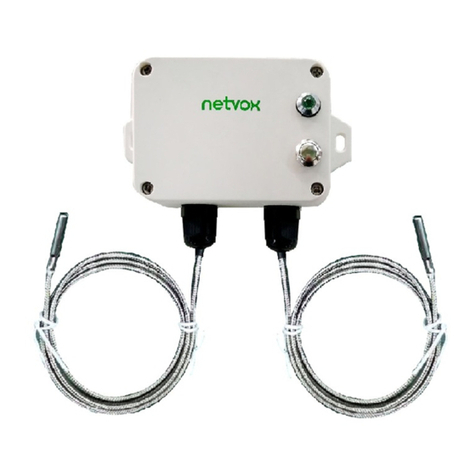
netvox
netvox R718CT2 User manual
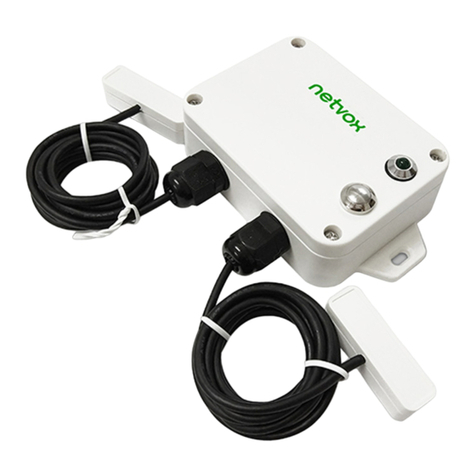
netvox
netvox R718T2 User manual

netvox
netvox R718J User manual
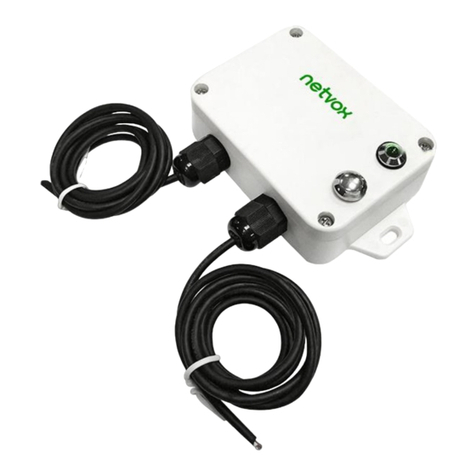
netvox
netvox R718KA2 User manual
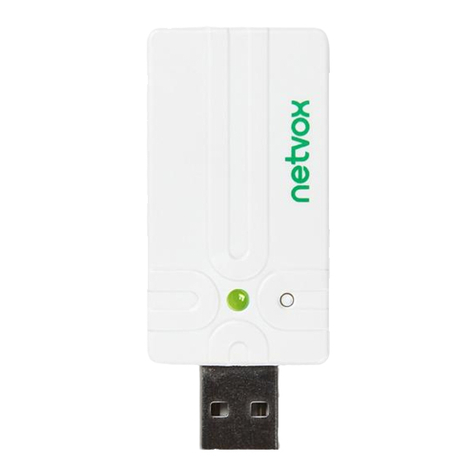
netvox
netvox ZigBee Z103A User manual

netvox
netvox R718H User manual

netvox
netvox R718H User manual
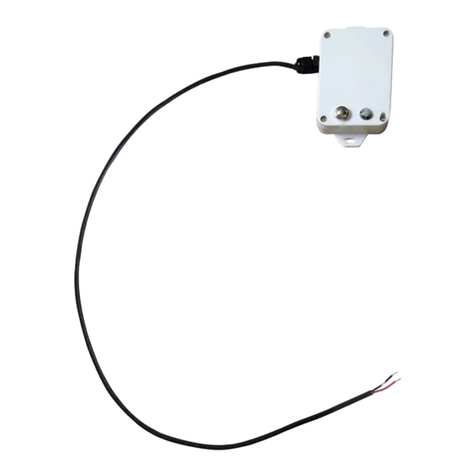
netvox
netvox R718IB User manual

netvox
netvox R718KA2 User manual
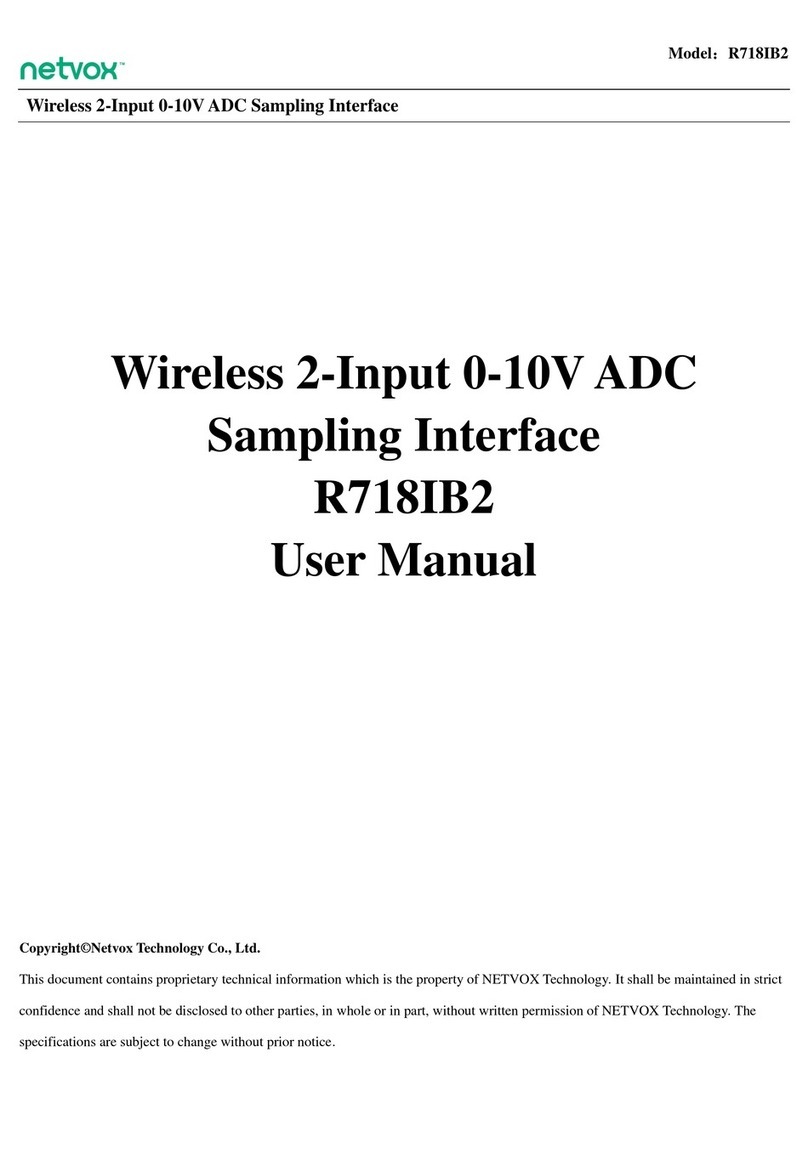
netvox
netvox R718IB2 User manual

netvox
netvox R311CA User manual

netvox
netvox R718CT2 User manual
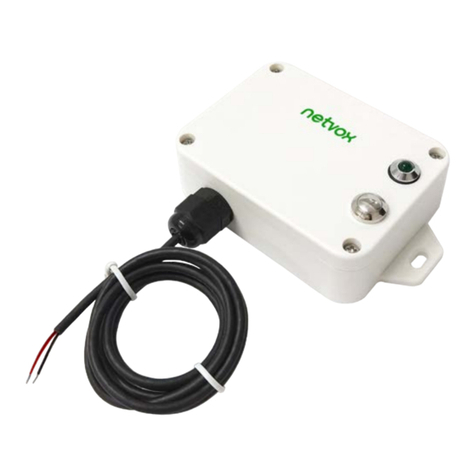
netvox
netvox R718IA User manual
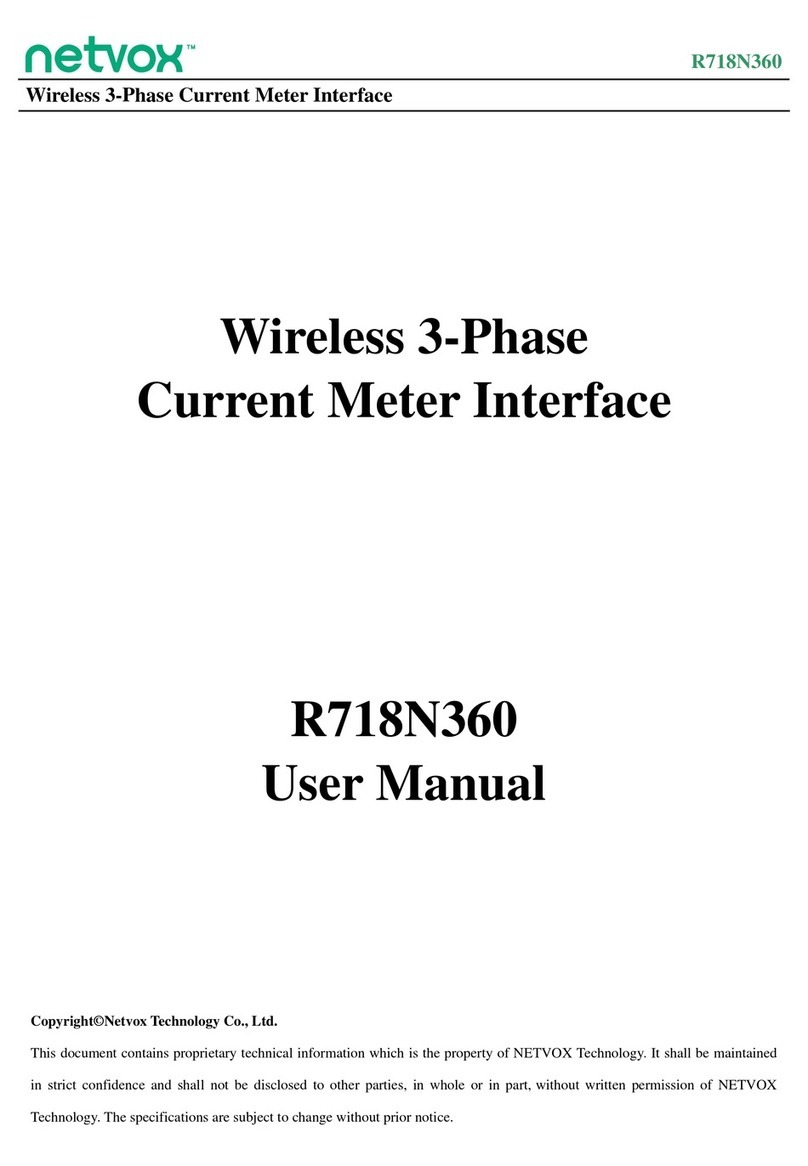
netvox
netvox R718N360 User manual
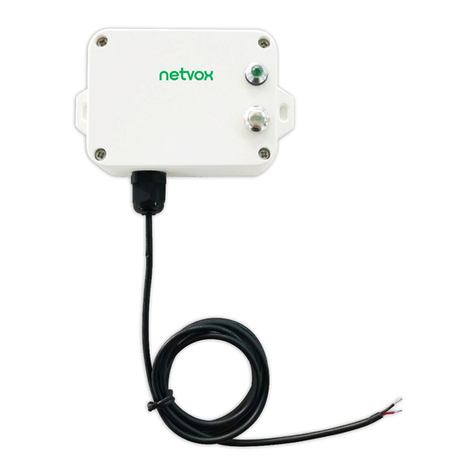
netvox
netvox R718CK User manual

netvox
netvox R718T2 User manual
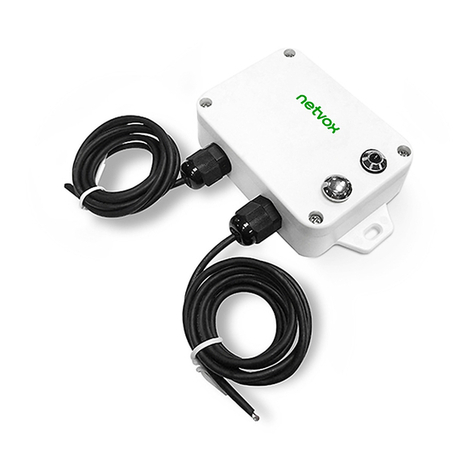
netvox
netvox R718J2 User manual

netvox
netvox R718H2 User manual

netvox
netvox R718J2 User manual
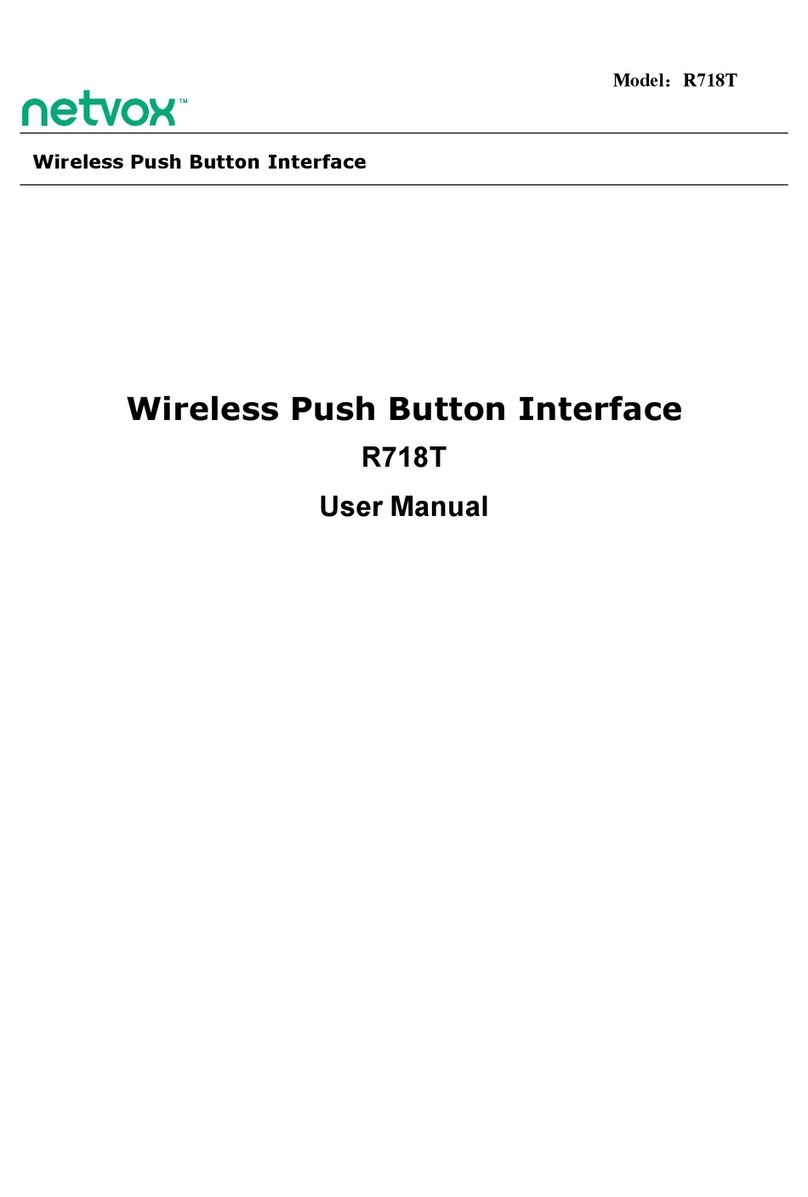
netvox
netvox R718T User manual



